40+ Best Beautiful Designs of Rangoli for Diwali 2023
In this article I have added more than 40 + beautiful designs of rangoli for diwali. These rangoli desgins are very beautiful and can be drawn by anyone. This Diwali decorate your house with beautiful and easy rangoli designs. Most of the designs are hands free .That means anybody can draw these simple free hand Rangoli designs. The free hand rangoli designs consists of Diwali Rangoli designs, Diya Rangoli designs, peacock rangoli designs and many other free hand simple rangoli designs specially for Diwali. Book mark this page for beautiful Diwali Rangoli designs. These beautiful designs of rangoli for diwali are worth sharing with your friends and family. You can draw these beautiful rangoli on your door, balcony, temple entrance and where ever you feel is the right place.











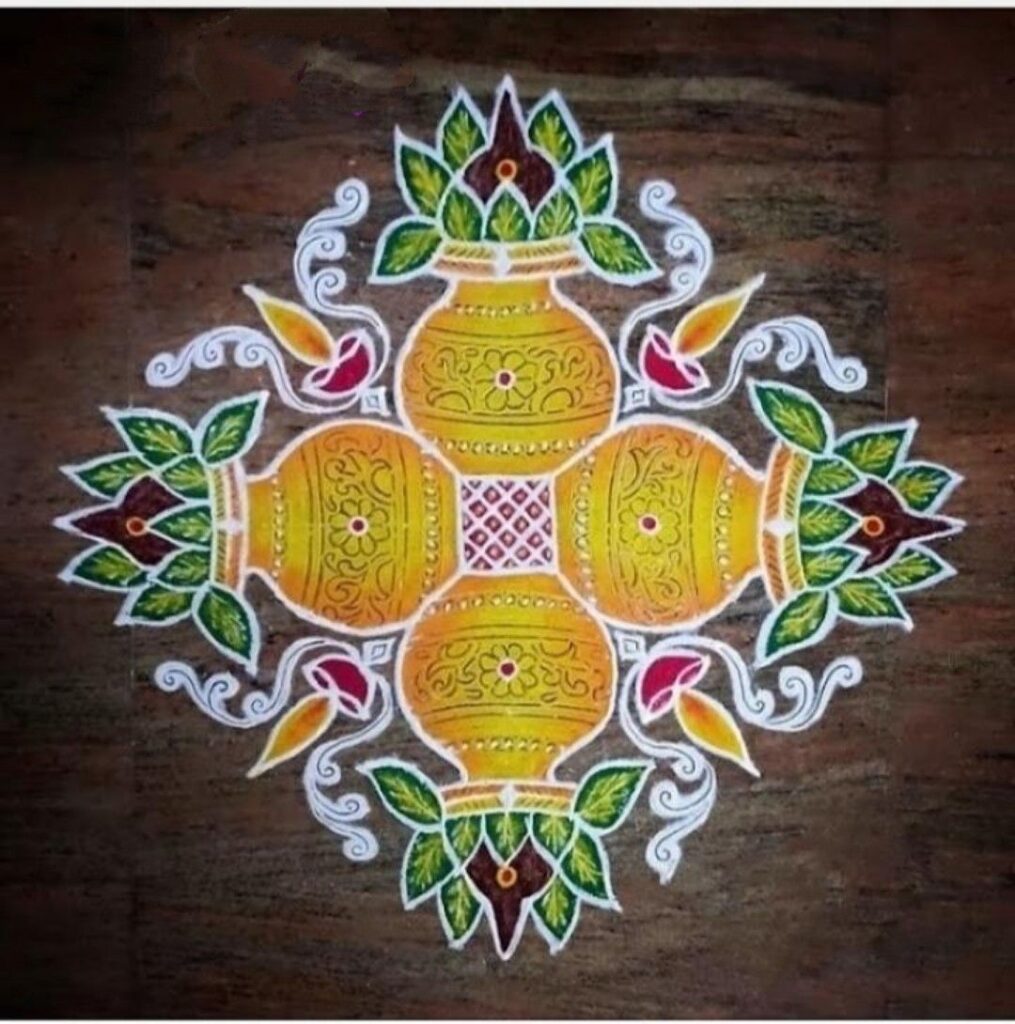



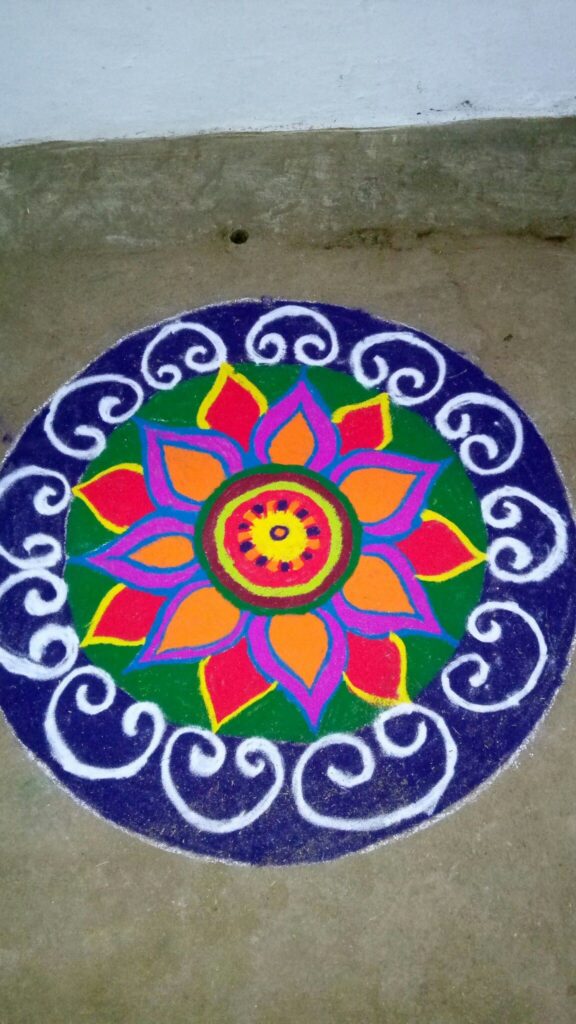






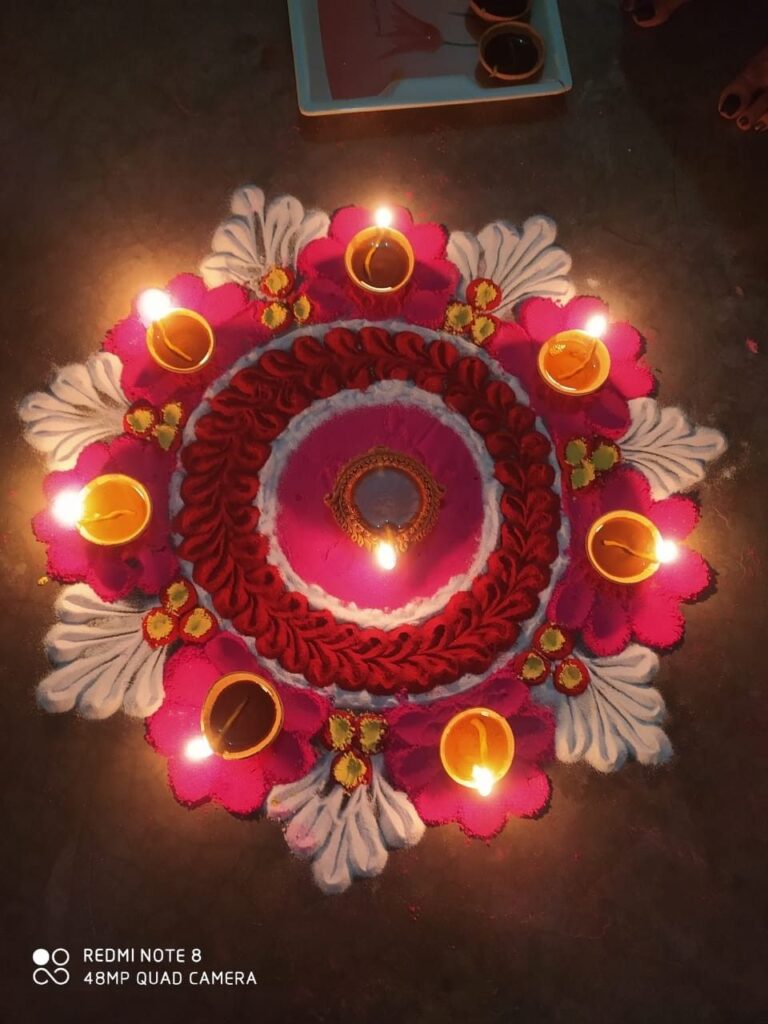





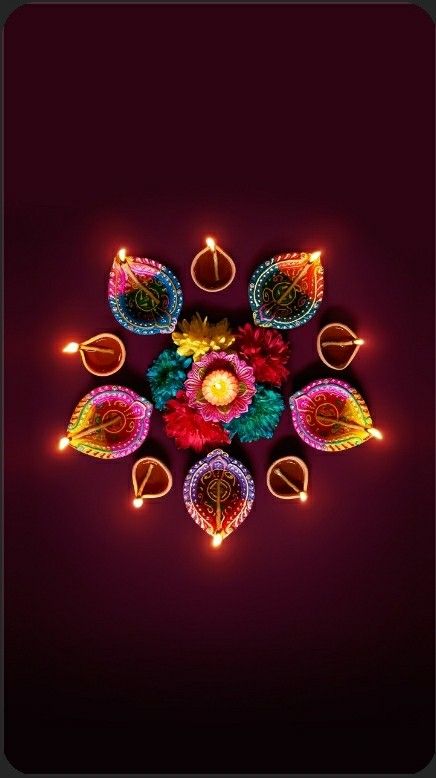









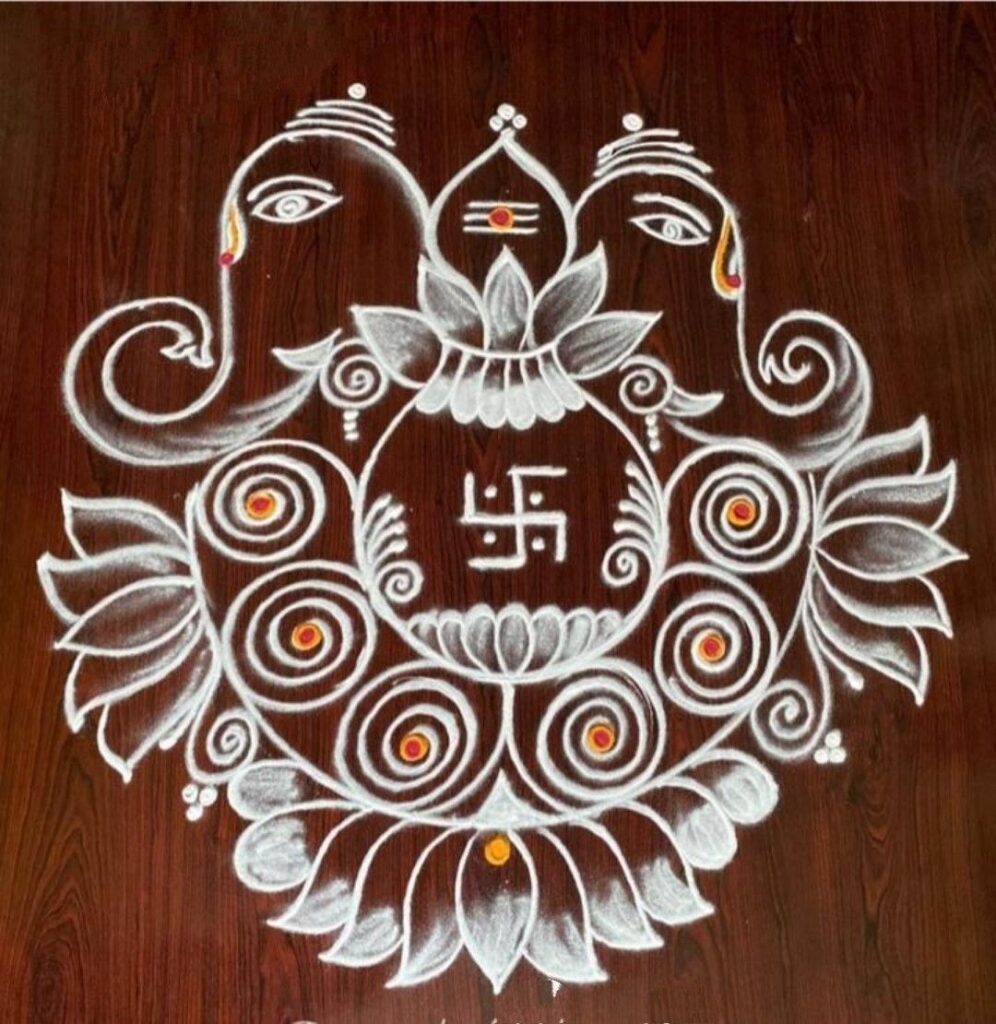














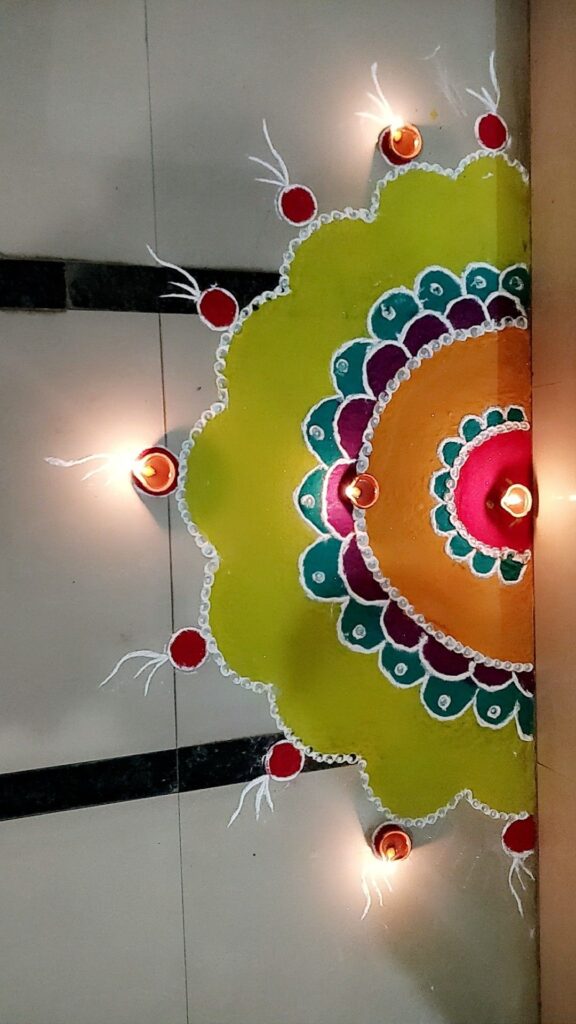

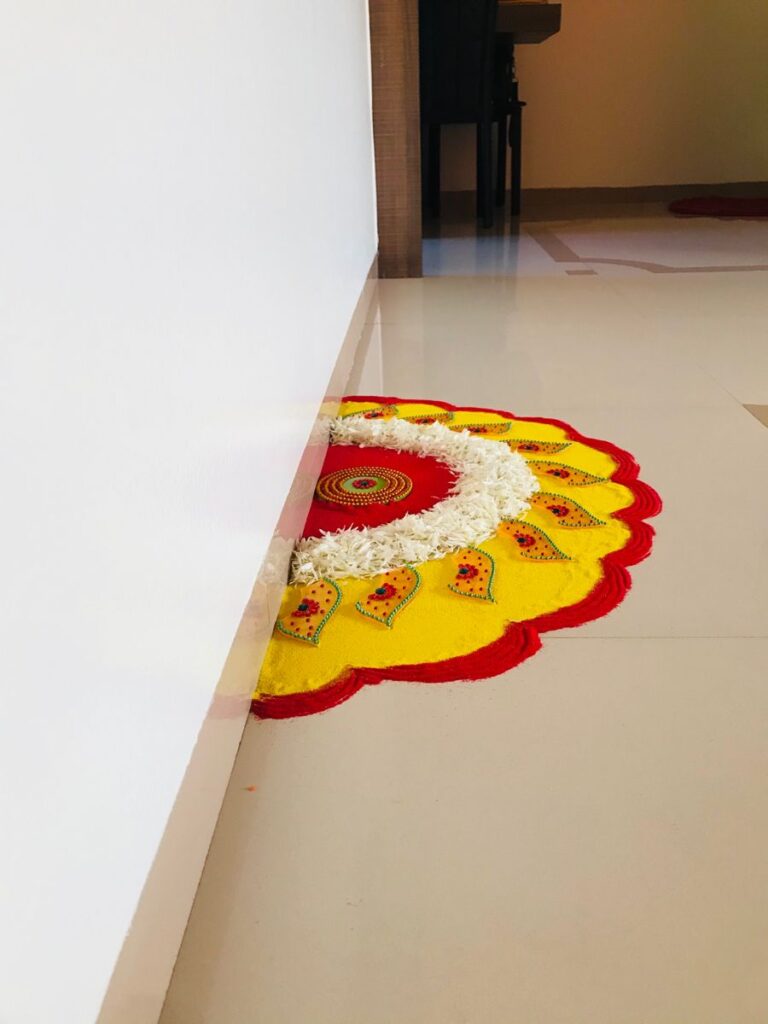




















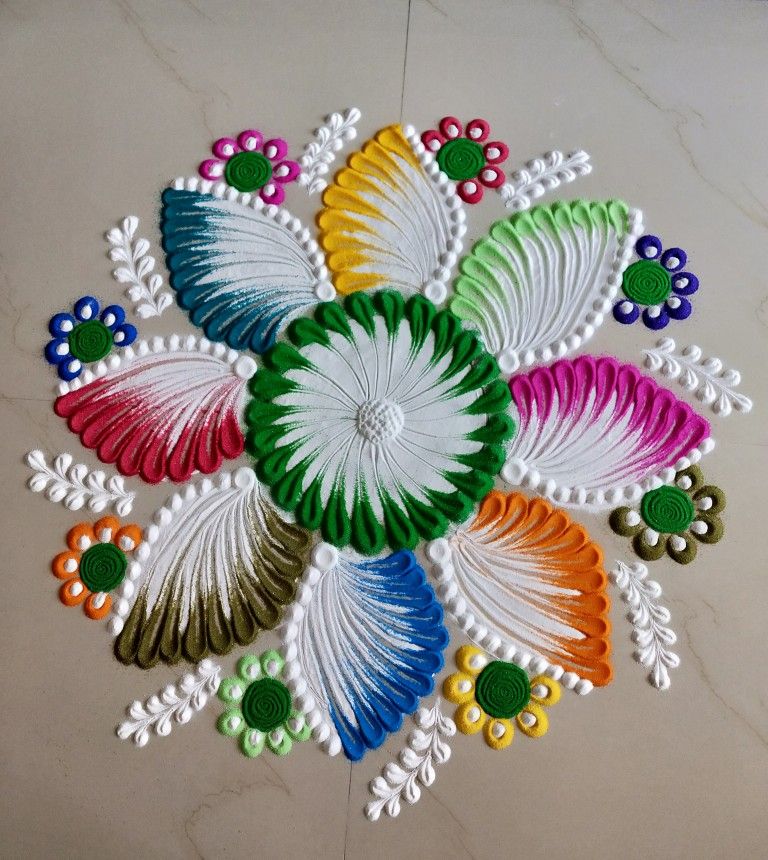

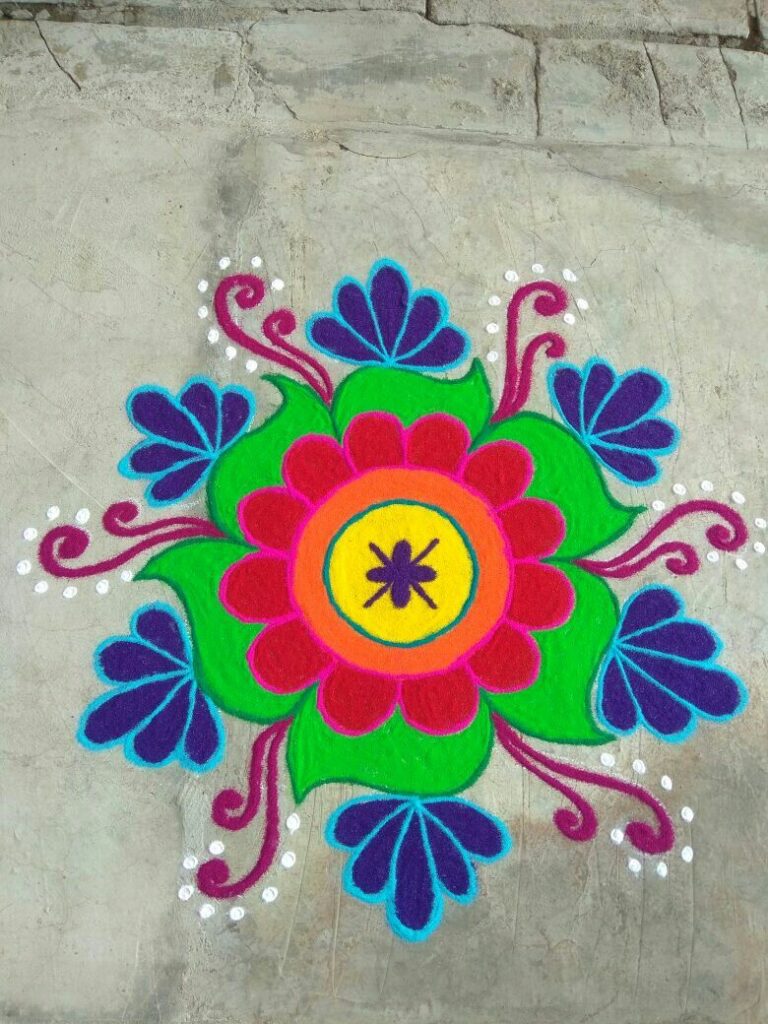






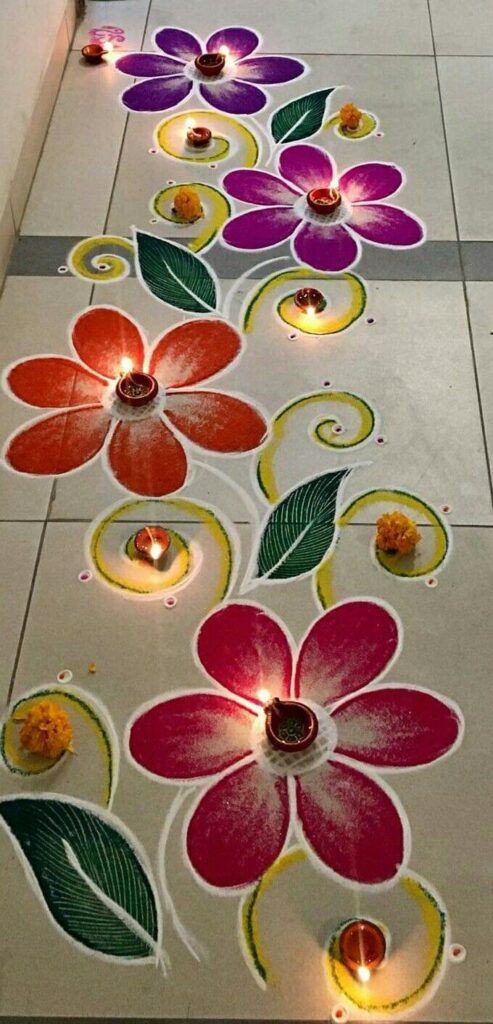




Cultural Importance of drawing Rangoli in Diwali
Rangoli is very important culturally. In almost all the Indian Festivals Rangoli is made. Rangoli is made specially during Diwali. Rangoli is made of different colors. Different colors in Rangoli represent happiness, prosperity and livelihood. It spreads positivity in the atmosphere. Diwali is a festival of lights and drawing Rangoli is considered auspicious. It is believed that a house that has rangoli attracts positive energy. We should always draw Rangoli on a clean surface as it draws blessings from God and Goddesses. During Diwali it is important to keep the house clean and draw rangoli on a neat and clean surface. Ma Lakshmi visits our house during Diwali and drawing rangoli signifies welcoming Lakshmi Mata in our home and blesses us with prosperity and wealth. That’s why drawing rangoli on diwali has great cultural significance.
Historical Significance of Drawing Rangoli on Diwali
The word Rangoli is derived from a word called rangavalli. Rangavali means ‘rows of colors. Rangavalli is mentioned in Mahabharata and Ramayana as well. This shows rangoli drawing is a common practice from ancient times. The historical significance of Drawing rangoli on diwali is that Ma Lakshmi visits our homes on Diwali. We draw rangoli to welcome Ma Lakshmi in our houses and bless us with wealth and prosperity.
There are many origin stories of Rangoli
Story 1
According to Gujarati mythology when Lord Krishna settled in Dwarka, rangoli was drawn by her wife Rukmani. From that time onwards Rangoli is drawn. Rangoli is called Satiya in Gujarat.
Story 2
Lopamudra started drawing Rangoli for decorating Yagyakunda. The husband of Lopamudra wanted to please Gods by worshiping them. She helped her husband in pleasing the God.
Names of Rangoli in different parts of India
- Rangoli is called Kolam in Tamil Nadu
- Rangoli is called Chouk Purna in Chhattisgarh
- Rangoli is called Joti in Orissa. Joti is drawn in front of Lord Jagannath
- Rangoli is called Sanskara Bharati in Maharashtra
- Though the name of Rangoli is different in different parts of India but the motive behind it is the same. That is to please our Gods.
Importance of Rangoli for Diwali 2023
Rangoli for diwali 2023 is very important. Every house has a rangoli drawn in their house on the day of Diwali. Diwali Rangoli is very auspicious. It is considered to bring wealth and prosperity to the house. Colors used in Diwali Rangoli are believed to bring positive energy and welcome Ma Lakshmi in our household. Rangoli for Diwali is also drawn to welcome people.
How to create Rangoli for Diwali 2023 ?
Creating a beautiful Rangoli for Diwali 2023 can be a wonderful way to celebrate the festival. Here’s a step-by-step guide on how to create Rangoli:
Materials You’ll Need:
Colored Rangoli Powder: You can buy colored powders specifically made for Rangoli, or you can use natural materials like rice flour, crushed flowers, or colored sand.
Design Idea: Decide on the design or pattern you want to create. You can find design ideas online, in Rangoli books, or create your own. There are many different types of Rangoli known in different areas.
- Rangoli is called Kolam in Tamil Nadu
- Rangoli is called Chouk Purna in Chhattisgarh
- Rangoli is called Joti in Orissa. Joti is drawn in front of Lord Jagannath
- Rangoli is called Sanskara Bharati in Maharashtra
- Based on the area you stay you can get design ideas.
Step 1: Prepare the Surface
Start by choosing a clean, flat surface for your Rangoli. Traditionally, It is believed that Ma Lakshmi visits only to a clean house. So it is important to draw rangoli on a clean surface.
Rangoli is created at the entrance of homes, but you can also make it indoors or in your garden.
You can also draw rangoli in your verandah , puja room and other places.
Step 2: Create an Outline
Use chalk or a pencil to draw the outline of your design on the surface. You can also use a powder to draw an outline. You can drip a small amount of powders to draw an outline of rangoli. You can also use a stencil if you’re not confident in freehand drawing. You can also use some household shaped objects that can help you draw rangoli. Objects like rounded caps, scales , photo frames to draw a square rangoli. You can use other similar things to draw outline of diwali rangoli.
Step 3: Begin Coloring
Start with the center of your design. Pour a small amount of one color at the center and use your fingers to spread it in a circular motion.
Move outwards from the center, adding different colors to different sections of your design. You can create intricate patterns and designs using these colors. Based on the outline of your rangoli you can fill in with different colors.
Step 4: Use Patterns and Layers
Experiment with different patterns like dots, lines, and shapes to fill in your design.
You can create layers by adding contrasting colors to give your Rangoli depth. You can also use free hand designs to draw patterns and layers. The most common pattern for diwali rangoli is diya. Diya can be drawn easily.
Step 5: Add Details
After the primary design is filled in, add details like small dots, lines, and shapes using contrasting colors. This will make your Rangoli more intricate. You can also use threads and other objects to draw intricate designs in your rangoli.
Step 6: Decorate with Diyas (Lamps) and Flowers
To make your Diwali Rangoli more beautiful, you can place Diyas (lamps) at strategic points within your design. You can place led diyas , small statues of a god or something similar.
You can also decorate with flower petals, leaves, or whole flowers, beads etc. This adds a natural and colorful touch to your Rangoli.
Step 7: Maintain Your Rangoli
It’s essential to keep your Rangoli looking fresh. You can gently fill in any smudges or faded colors. When drawing Rangoli often the colors smudge. You can use a credit or debit card to clear the smudged area.You can gently press the rangoli colors with cards to fill in the gaps and empty spaces.
Step 8: Display Your Rangoli
Rangoli is meant to be viewed and appreciated. Place your Rangoli at the entrance of your home to welcome guests and celebrate the festival. You can draw your diwali rangoli in your verandah, balcony and puja house.
Step 9: Take Care
Remember, Rangoli is a temporary art form that may get disturbed by wind, rain, or foot traffic. It’s the impermanence of Rangoli that adds to its charm. Draw Rangoli where there are less chances of people stepping over it. The place should be dry and less windy.
Tips:
- If you’re new to making Rangoli, start with a simple design and work your way up to more complex patterns.
- Be patient and take your time. Rangoli creation is an art that requires precision and creativity.
- You can practice your design on paper first to perfect it.
- Experiment with colors, shapes, and patterns to create a unique Rangoli that represents your creativity.
- Creating a Rangoli for Diwali is a beautiful way to celebrate the festival, express your artistic talents, and welcome guests to your home. Enjoy the process and the visual beauty of your creation.
Colors and their Symbolic Meaning in Rangoli for Diwali 2023
- Black – Black symbolizes the color of strength and stability.
- Red – Red is the color of fire and anger.
- White – White Color symbolizes positivity in nature.
- Blue – Blue is the color of sky.
- Green – Green is the color of sea.
Safety measures while drawing Rangoli for Diwali 2023
- Synthetic Colors – Be careful while using Synthetic Colors. Synthetic colors can cause irritation on skin and eyes.
- Don’t touch your eyes – Working on Rangoli for Diwali involves a lot of powdered colors. We should be careful while using synthetic powered colors. We should wash our hands before touching eyes. It can cause irritation in eyes and reddening of eyes.
- Natural colors – We should use natural colors for creating rangoli. There are wide range of natural colors created from flowers. We should use natural colors because it is not harmful to eyes and skin. Still we should avoid touching our eyes unless we have cleaned our hands.
- Mind the firecrackers – While creating Rangoli for Diwali we should mind the firecrackers around us. Creating rangoli diwali requires focus and attention. We may forget the nearby bursting firecrackers. So we should create rangoli for diwali away from the area where firecrackers burst.
- Choose a Safe Location: A safe location is very important for rangoli on diwali. On Diwali people burst crackers. We should avoid drawing rangoli on places where firecrackers burst.
- Select a flat, stable, and non-flammable surface for your Rangoli. Traditionally, it’s done at the entrance of homes, but you can choose other safe locations. You can draw rangoli for diwali in your balcony, verandah and puja room.
- Keep the Area Dry: Ensure that the surface you’re working on is dry. Wet surfaces can cause colored powders to become clumpy and affect the quality of your Rangoli. Avoid drawing rangoli near the kitchen sink or near the washroom or cleaning area. As people may stomp on it or it can be washed away.
- Use Safe Materials: If you’re using colored powders, make sure they are non-toxic and safe for use. Avoid using harmful chemicals. You can use natural colors which are made from flowers , leaves , spices and other natural substances.
- Allergy Precautions: If you or anyone in your family has allergies to specific Rangoli materials (like certain flower petals or colored powders), be mindful of this and avoid those materials. Allergy can also happen from synthetic
- Keep Children and Pets Away: While creating Rangoli, make sure that young children and pets are at a safe distance. They might accidentally disturb your work or come into contact with materials. Children and pets are very sensitive to synthetic and powdered colors. So children and pets should be kept away.
- Fire Safety: If you’re using Diyas (lamps) within your Rangoli, be extremely cautious. Keep them away from flammable materials. Use deep Diyas to prevent the wind from blowing out the flames. Also keep fire extinguisher always ready to prevent any fire
- Flammable Materials: Avoid using highly flammable materials in your Rangoli design, especially if you’re placing it near an open flame. Safety is a top priority.
- Work in a Well-Ventilated Area: If you’re using colored powders, it’s best to work in a well-ventilated area to avoid inhaling excessive amounts of powder.
- Keep First Aid Handy: In case of minor accidents like cuts or burns, have a basic first-aid kit nearby. During Diwali small burns are common from firecrackers so first aid will come in handy.
- Stay Hydrated: Creating Rangoli can be a time-consuming task. Ensure you stay hydrated, especially if you’re working in the sun.
- Remove Debris: Before starting your Rangoli, clear the area of debris or any objects that might pose a tripping hazard.
- Watch Your Step: Be cautious while working, as you may need to bend or kneel. Watch your step to avoid slips or falls.
- Wash Hands Afterward: After creating your Rangoli, wash your hands thoroughly, especially if you’ve been in contact with colored powders.
- Cleanup: Properly dispose of Rangoli materials. If you’re using natural materials, compost them if possible. Synthetic colors can cause skin irritation so it must be cleaned properly.Ensure that no harmful waste remains behind.
- Supervision: If children are participating, supervise them closely and teach them the necessary safety precautions. You should teach the importance of cleaning hands after working on rangoli.
Also Read